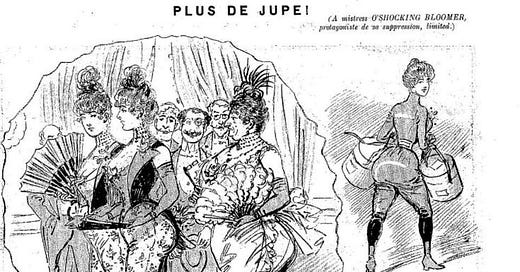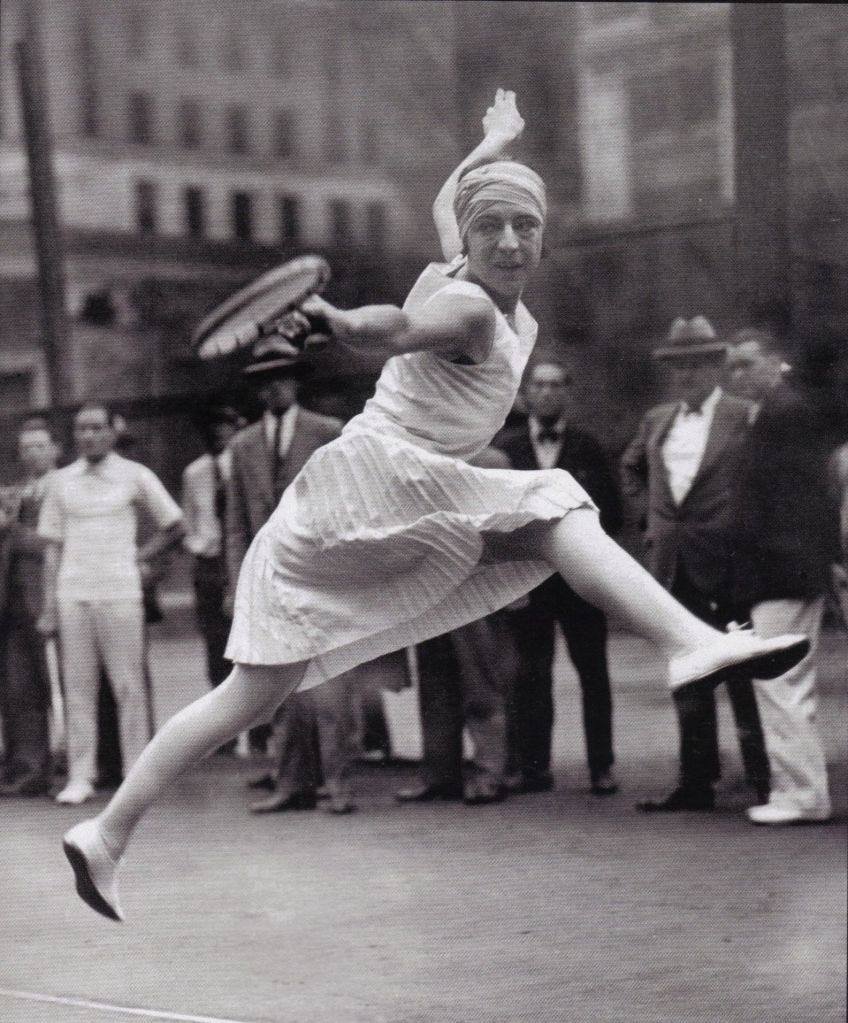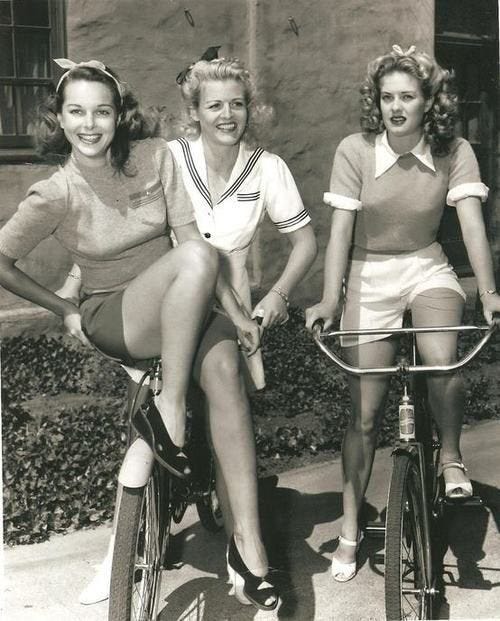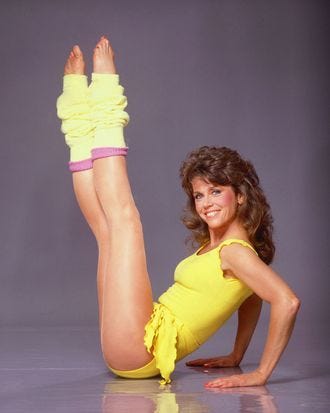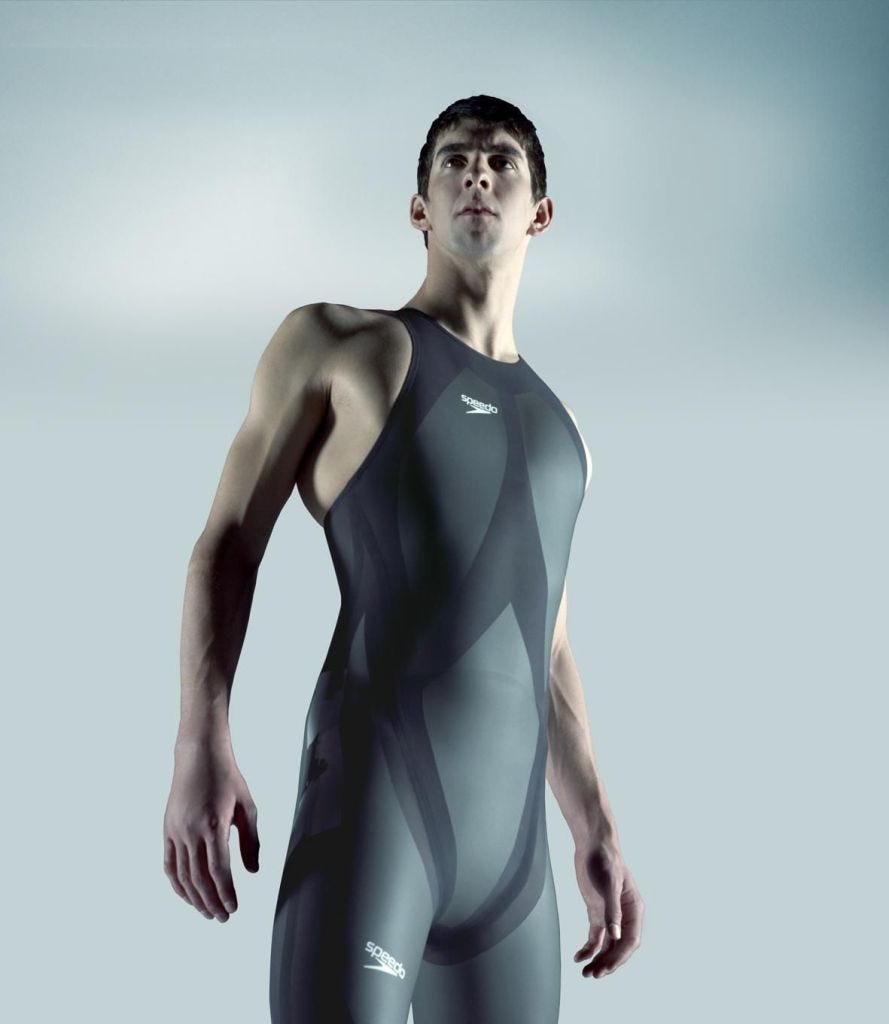According to Wikipedia, sportswear equates ‘activewear’, meaning “clothing, including footwear, worn for sport or physical exercise”. It therefore is worn for practical, comfort or safety reasons. Nothing close to anything fashionable.
Sports & fashion : worlds apart ?
We always refer to sportswear to talk about a type of clothing, however it is rarer to refer to sportswear to talk about fashion. Both ends would sometimes question their belonging to the same world even though they are both about clothes. Sportswear brands anchor their brand equities strongly in the sports they originated from : Nike is a running company, Adidas has a football anchor, Lacoste is a crocodile on a tennis court. The latter is the only one hosting a show to reveal its collections as part of the traditional Paris Fashion Week. Maybe because it emanated from an elegant sport, which anyway appealed to the same aristocracy as (high) fashion collections. There was no major social leap to be done.
Functionality and style is an interesting mix. Not an obvious one. This is how the Wikipedia definition noticeably mentions that ‘sportswear is also at times worn as casual fashion. clothing’.
Rewinding to the origins of sportswear
After WWI, fashion and sports started mixing as women started enjoying their newly gained freedom, while living in a society where consumption and leisure (outdoor sports such as polo, horse riding, tennis and sailing grew in popularity among the wealthy) gained a growing place. But actually, long before that, in 1851, it was a British lady, Amelia Jenks Bloomer, who designed the first culotte skirt, as a symbol of women’s social & political emancipation desire. Greater social autonomy results in greater freedom to move.
In 1901, as the Victorian era ended, women’s fashion entered a new phase : a new emphasis was made on comfort and practicality. In the 1920s, Jean Patou and Lucien Lelong designed clothes for sport in their respective collections. In these years also one of sportswear classics was created : the jersey polo shirt, invented by Lewis Lacey and worn by René Lacoste when playing tennis (he won the US Open in 1926). From 1914 to 1926, Suzanne Lenglen, a French tennis player, dressed by Patou, won 31 championships.
In the 1930s, swimsuits challenged the social limits of how much flesh it was acceptable to show in public while practicing sports. Elsa Schiaparelli expanded her knitwear line to bathing suits. Yet sportswear, as we know it today, is very often presented as an invention of American designers since “women started enjoying leisure activities in the early to mid twentieth century, they developed sportswear to meet their needs” (WWD, 09/08/12).
Whether its origins are American, British or French, the origins of sportswear are rooted in womenswear. Which is quite paradoxical when we look at how women were considered as an afterthought for sportswear collections for the past 30 years, whilst being the original reason for the creation of this new category. To note, “many of the first american sportswear designers were women” (such as Claire McCardell, Bonnie Cashin or Vera Maxwell).
This was a small revolution in fashion at the time, since “before the mid twentieth century, US apparel firms mostly copied French styles for the American market”.
Sportswear as a reflection of society
Not only reflecting a change of physical exercising habits, the apparition of sportswear was a broader reflection of the general acceleration of our daily lives, which is still going on today : “Sportswear was created to cater to the needs of American women whose lives were becoming increasingly fast-paced”.
It is also interesting to look at it from a sociological point of view : “it also became the dress of the American middle class”.
“In the 1940s then in the 1950s people began moving from the cities to the suburbs”. It contributed to popularising casual dressing. “Suburbia started influencing fashion trends”.
In the 1960s, “sportswear started taking a unisex look”.
A greater freedom of movement
Sportswear has its roots in the culture of easy that later would become an echo of lazy : “Sportswear was designed in comfortable fabrics that were easy to care for”.
In 1959, the US chemical company DuPont developed elastane (also known as spandex), a fabric that could be stretched up to 600% and then regain its initial shape : they coined their invention Lycra.
This was a true milestone, enabling the development of comfortable pieces of clothing that could allow their wearers to move more freely. To date the global spandex market is estimated to be around 1 million tonnes and it is growing at more than double the rate of all fibres activity.
The American spiral up
The american ready-to-wear grew a worldwide aura in the 1970s : in 1973, “the tee-shirt became the number one counterculture status symbol around the world.”
In the 1980s, the revolution started on TV with Jane Fonda’s 1982 aerobic videos which became a smashing hit. The lycra leotards and leggings gave birth to what was coined second skin clothes.
In 1985, Nike signed the basketball star Michael Jordan. For sneakerheads it marked the beginning of a brand new era, the same way humanity decided to count years from JC. From a pop culture standpoint, it is when singers decided to drop adidas for Nike.
American hip-hop artists had embraced sportswear as a way to reject traditional smart fashion & brands for sports and street brands. This is how streetwear draws its origins from afro american culture. By adopting sports clothes in their everyday garments, they started a new aesthetic, rooted in oversizing.
Blending in & challenging fashion
Competition outfits are by essence designed to maximize the athletes’ bodies performance. At the beginning of 2000s, it was no longer the adidas sweatpants nor the Air Jordans that made people talk but the biomimetic swimsuits. Speedo Fastskin was designed to resemble shark skin (with small ridges conceived to help water flow faster on the body). In the Beijing 2008 Olympics, out of the total 97 swimming medals, 83 were won by athletes wearing this type of suits. It raised a controversy and was banned in 2010.
As sport brands engaged in a technical race, it was also at this time that they grew tighter links with fashion designers. In 2002, Yohji Yamamoto launched Y3 with Adidas. In 2004 it was Stella McCartney’s turn to design a recurring line for the 3-stripes brand. Alexander McQueen launched a Black Label for Puma before Hussein Chalayan became the artistic director of the brand in 2008.
Today, many fashion brands integrated sportswear influences (materials, shapes, pieces of clothing…) to their main collections and some even have a line dedicated to exercising clothes. Sportswear has come a long way, yet its history carries many of fashion's current challenges : women in society, unisex clothing lines, influence of the suburbs, black designers, fostering healthier lifestyles...

